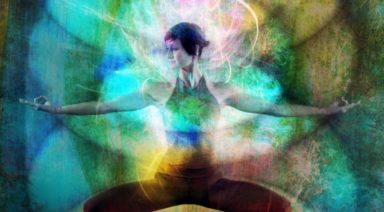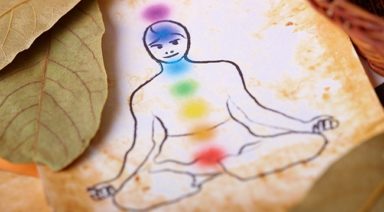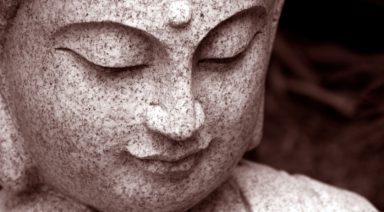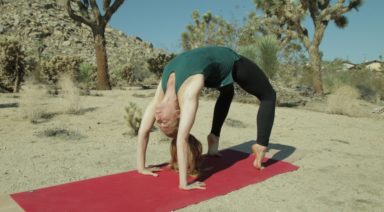Why You Need to Understand Your Kosha Energy
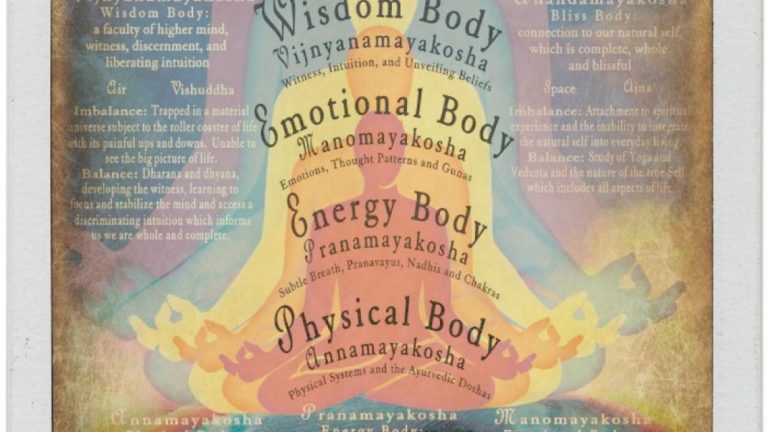
By now, you’ve probably read a decent amount on chakras, but have you ever taken note of your koshas? They are another vital bodily energy that those seeking to live holistically very much need to understand for a balanced life.
A Kosha (also, Kosa) (Sanskrit कोश, IAST: kośa), usually rendered “sheath”, is one of five coverings of the Atman, or Self according to Vedantic philosophy. They are often visualized as the layers of an onion. Basically, the koshas are energetic layers or sheaths that move from the outermost layer of skin to the deep spiritual core. The koshas provide a framework for conceptualizing ourselves. Much like the chakra system, the kosha layers come packaged with their own individual physiological function and psychology.
In some respects, the kosha layers mirror the psychology of the chakras. This is why it’s so important to have a firm grasp on the concepts, and to understand how each energy system can impact your body and life.
So what are the koshas, and how do they tie into you overall? Here are quick overviews of each kosha and the area it deals with, as well as a diagram for a visual picture of how the koshas work according to MindBodyGreen:
1. Annamaya: “Foodstuff” Sheath
The first layer of the koshas represents the physical body, including the skin, muscles, connective tissue, fat and bones. When you pinch the side of your waist and feel the skin and muscle under your fingers, you engage with annamaya kosha. For a lot of people the first layer might be where we spend the most time hanging out, locked in our physical senses
2. Pranamaya: “Energy” Sheath
The second layer represents the pranic or subtle body—in essence, it’s the circulatory system for prana, or “life-force energy.” It also includes the fluid, physical aspects of the anatomical body that control the movement of blood, lymph and cerebrospinal fluid through the body and the circulatory movement of breath through the respiratory system. In psychological terms, pranamaya kosha controls our bodily and spiritual rhythm.
3. Manomaya “Mindstuff” Sheath
The third layer takes us into the deep recesses of the mind, emotions and nervous system. While modern science has developed an acute understanding of the inner working of the brain, the mind, motivations and emotions still retain a mysterious quality. The manomaya kosha makes up the control panel for the emotional and physical body, sending messages through your brain synapses and the central nervous system. It’s this layer where you move from physical feeling and rhythm to emotional feeling.
4. Vijanamaya: “Wisdom” Sheath
Diving underneath the sea of emotions in the manomaya kosha, we reach the wisdom body of the fourth kosha—Vijanamaya. It’s here that we develop awareness, insight and consciousness. Emotions left unchecked by awareness are destructive. The awareness of vijanamaya kosha illuminates our deeper desires and motivation and allows us to see the choice we have in all things. Instead of simply feeling or acting, we choose to feel or act with intention. Sometimes the intention is simply to move past the emotion into pure sensation and bliss.
5. Anandamaya: “Bliss” Sheath
The fifth and last kosha drops from conscious awareness into the pure and radiant bliss body. Within the anadamaya kosha, you might experience connection with all things, liberation from suffering and a state of being often described as “in the flow.”
Throughout the day, notice yourself shifting between the koshas layers:
- Right now I feel hot.
- Right now I’m paying attention to my breathing.
- Right now I feel upset.
- Right now I understand why I reacted that way yesterday.
- Right now I’m deep in meditation.
- Right now I feel bliss.
Yoga helps you to create a track to the deeper subtle kosha layers, so they’re easier to access. As asana prepares the outer body, yogic breathing turns your attention to the pranic body. Lastly, yogic philosophy provides the tools for bringing awareness to your fluctuating emotional state of mind, so you can embody and radiate health and bliss.
For an even more in depth look, this colorful infographic provides visual insight:

5 Tips to Reclaim Your Calm

Stress and anxiety have become everyday realities, especially over the last year. In fact, a survey conducted in 2020 reported that 62% of adult respondents reported experiencing anxiety on a regular basis. But what if it didn’t have to be that way?
Yoga, breathwork, and meditation can create a foundation of synchronicity in your body that allows you to regain control of your life in a way that calms your sympathetic nervous system (fight or flight response) and supports an overarching sense of calmness in our chaotic world.
These practices, while not a panacea for anxiety, can improve stress response, and have been clinically proven to do so. A recent study at New York University Grossman School of Medicine discovered that in a group of randomly selected people with Generalized Anxiety Disorder (GAD), 54% met the criteria for “meaningfully improved symptoms,” after practicing yoga.
So, what can you do to reclaim a peaceful mind and life? Here are 5 tips to get you started:
1.) Develop a regular physical yoga practice (or re-commit if you already have one)
All types of physical exercise are beneficial for decreasing stress response by improving the health of the cardiovascular system (also potentially reducing the risk of heart disease) and releasing endorphins. Yoga, however, offers a special twist of calmness and relaxation while still allowing an exertion of physical effort, creating a fertile environment to build self-awareness through mindful movement.
Because of the flexibility and strength gained through regular practice, joint and muscle pain may also be soothed through a physical yoga practice (also called Asana) by reducing stressors related to pain responses in the body. Over time, and with dedicated practice, these benefits add up dramatically, even to the point of correcting scoliosis or reducing heart palpitations. Vinyasa or Yin yoga are generally the most beneficial practices for these physical benefits.
One common misconception about yoga is that you must practice for an hour to benefit. This fallacy was derived from the fact that studio classes often run for an hour. Any amount of time spent practicing physical yoga counts, whether it be 10, 60, 90 minutes, or more!
2.) Practice 5-10 minutes of breathwork
Breathwork (or Pranayama) can be easily overlooked, even by seasoned yoga practitioners, but it is one of the most beneficial aspects of your practice. How we breathe is often directly correlated to how we feel; short and shallow breathing makes us feel closed off and more anxious, whereas long, mindful breathing creates a sense of abundance, while also promoting a more meditative and mindful state. Taking as few as five minutes a day to breathe deeply and mindfully can literally re-oxygenate the mind and body. This allows more clarity and direction in everyday scenarios, and (with the use of some specific practices, like this one), can create a space of time between a personal cause and retort, transforming reactions into more thoughtful responses.













